Northwest Tasmania is pretty much as far out as it gets. Perhaps that is why it has preserved the characteristic rugged beauty of its coastlines, tranquil rivers, ancient rainforests and mysterious caves.
Moreover, unique wildlife and unspoilt natural scenery abound this region.
We based ourselves in Smithton, a lovely town in the far northwest of the Bass highway. We were pleasantly surprised at this busy little town with large supermarkets, good roads and restaurants. It is still the timber capital of Tasmania as well as the regional centre for dairy, beef, and fishing.
The Tarkine (pronounced tar-kyne) region in Tasmania’s northwest is known as one of the world’s largest temperate rainforests, full of eucalyptus, myrtle, pine and lush green vegetation.
TARKINE DRIVE
The Tarkine drive starts at a point close to Smithton, and runs in a circular loop about 200 km in length. You can drive the entire loop in one day, driving either clockwise or anti-clockwise. Alternatively, you can go in one direction on day 1, towards the Edge of the World, for instance, and return to Smithton. The next day you can go the other way, towards Julius River. The two-day plan will mean that you will skip the stretch from Edge of the World to Julius River, but you will have more time to stop, walk, look and enjoy.
Yes, there is a lot to see! You will find remote beaches, sand dunes, forest vistas, waterfalls and sinkholes along the way, and many such places will beckon you for a short stop.
TRAVEL TIPS
It is a stand-alone route, deep into the wilderness and totally off the beaten track, and we found very few cars when we drove along it in April. The roads are generally two-lanes but there are many parts that are bumpy and uneven. However, there is very little traffic.
Although most of the roads are sealed, they always become unsealed close to every destination so that the last few kilometres are on muddy dirt roads. So, it may be a good idea to rent a 4WD (we had one) or go in a group of two cars in case of an issue due to the road surface.
Mobile reception is generally poor through most of this route, and google maps don’t work! It is better to carry a printed map or good directions. Signage is good at the beginning of specific roads, but not everywhere.
It can rain at any time, so be prepared to even drive back if the weather turns too nasty.
GAS AND SERVICES IN THE TARKINE ROUTE
The Tarkine drive route is quite remote and there are very few places with services.
The only place with a gas station is Marrawah (at the end of the route on one side of the loop). There is a small store, a pub and a post office here. The population is (hold your breath) 131!!
The other place is Arthur River where there is a tiny store, with a food take-away counter but no gas. We stopped here for a hot chocolate.
So, please take some small snacks and drinks and fill up your car before you start
BEST STOPS IN THE TARKINE DRIVE
Here are some of the best stops you should not miss:
THE EDGE OF THE WORLD
The name is definitely exciting and the viewpoint is totally awesome at this westernmost point overlooking the vast Indian Ocean. It does feel like you are at the world’s edge!
There is a long boardwalk path and a viewing platform, from where you can walk right to the edge over the rocks. When you look westwards, you can just see the ocean stretching as far as you can see. There is nothing between this point and South Africa!
It is very, very windy and you can just about manage to stand here for a few minutes, barely enough to admire the aboriginal symbols for the months of the year, embedded in a big round circle. We stayed on for as long as we could because this place has a unique charm in a rugged sort of way.
This is one of the few places in this route that has toilets. There is a picnic and barbecue area too, but I wonder if you can cook with so much wind.
You cannot miss this place as the signage is good en route. The last one kilometre is unsealed.
ARTHUR RIVER AND CRUISES
The Arthur River town has a beach and a river. The ranger station and visitor centre may or may not be open (It was closed in April when we passed through).
The route crosses Arthur River more than once at different points on this wild river.
We passed by what appeared to be where Arthur River Cruises start but apart from the signboards and some cruise boats, it was deserted but pretty. Perhaps they work only during high peak season.
SUMAC LOOKOUT
This is one of our best points in this route.
This part of Tarkine route is the beginning of the temperate rain forest section. There is a short downward sloping walk through a dirt path from the tiny car park. It can be slippery though, if it has rained recently.
The view of the Arthur River cutting its way through the surrounding dense forested hills is simply spectacular!
The viewpoint has a nice bench to sit and enjoy the view.
TROWUTTA ARCH
Another popular and amazing destination in the Tarkine route.
Trowutta Arch was formed by the collapse of an ancient cave. The roof of the cave fell in leaving one section between two sink holes.
There are two arches here. The first arch is difficult to pass through as it is full of small rocks and stones but as you walk through it, there is a nice view of the second one which is a bit far off. The second one is full of water.
It’s quite a spectacular sight although covered in ferns and moss.
It looks like something straight out The Hobbit – a mystical old place. Or a prehistoric wonderland!
The walk is about 45 minutes from the car park. You will need to cross two unsealed gravel roads to reach here, but it is worth it.
JULIUS RIVER RAINFOREST WALKS
Another Tarkine treasure! These are great walking tracks to get out of the car and give your legs a good work out.
There are two loop tracks at the Julius River stop. The longer walk takes about an hour and loops through the forest.
The shorter loop track is about 45 mins and is more fun because the track runs along the river, then over a bridge and then climbs a hill looping back to the car park.
There were ferns and ancient plants and great scenery around. The forest floor was full of all kinds of fungi and mushrooms. From the raised boardwalk, we could see over the side of the hills and fallen trees of the rainforest and the river below.
This is a must-do stop. There are picnic tables, barbecues and toilets too.
There are more stops in more remote places for the adventurous.
As mentioned earlier, Smithton is probably the best base, but Stanley is another option although it is further and would mean another 45 mins drive.
Stanley is definitely worth looking around apart from using it as a base. There are some awesome places in Stanley to drive around and explore.
A bit about Stanley
Stanley is a town in the far north-west of Tasmania – unique because of its location on a small neck of land. It is famous for ‘the Nut’ – a volcanic landform on the headland.
Driving to Stanley from the mainland across the Bass Highway makes it very picturesque and its views are simply awesome.
Walk down Geoffrey beach
Breathtaking views of the Nut and the beach itself – pristine sand, flocks of gulls, reflections on the water and total peace and quiet. You can walk for an hour or more on this beach. It is like the beach belongs to you – you will see very few people around. It is so beautiful that we couldn’t stop taking pics as the colors kept changing at sunset.
Geoffrey Beach Penguin viewing tour
There is a viewing platform illuminated by special red lighting (to not disturb the penguins) at the end of Geoffrey beach. It is advised to leave cameras and torches behind while watching the penguins head to their burrows. This tour is available from September to March.
The Highfield historic house and viewpoint
A historic house constructed in 1826 as the first European settlement in the north-west, with some dark history.
The best part of this property is its location high up on the hill that provides the amazing view of the NUT. This is another good vantage point on the hill for a great view of the lush farmland and town below.
This part of Tasmania is a must-see for anyone who loves a bit of adventure travel.
We spent 3 days in this region and drove off eastward towards Burnie for our next adventure.

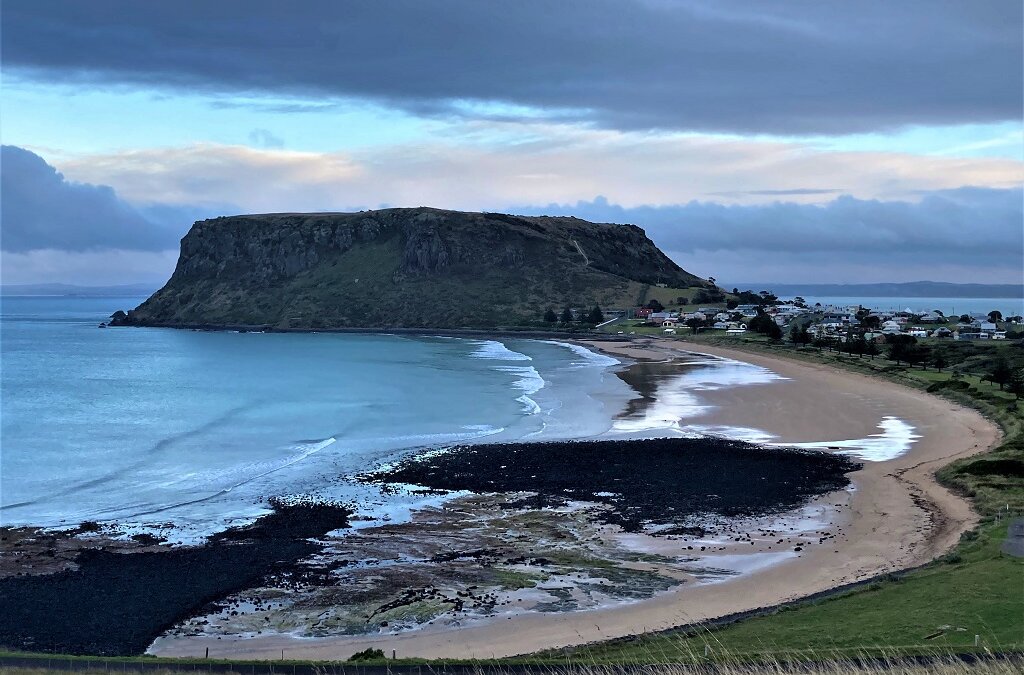
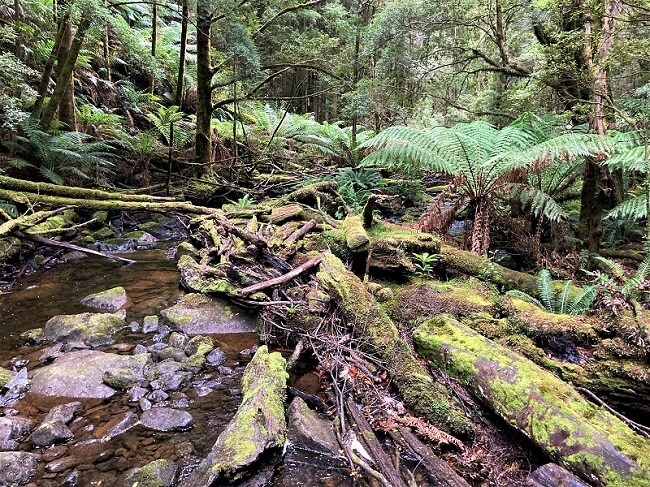
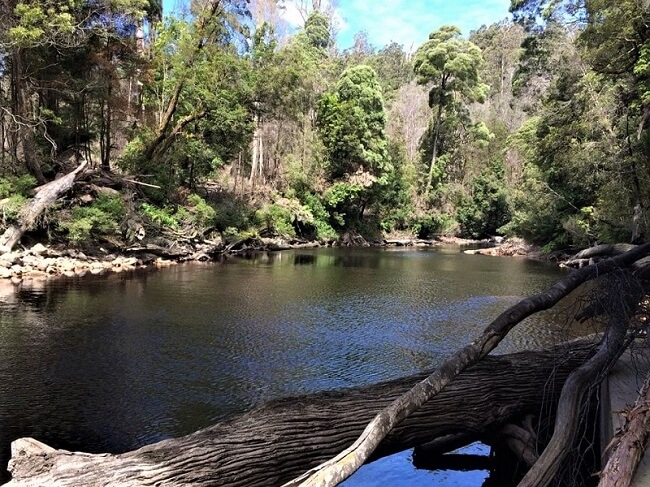
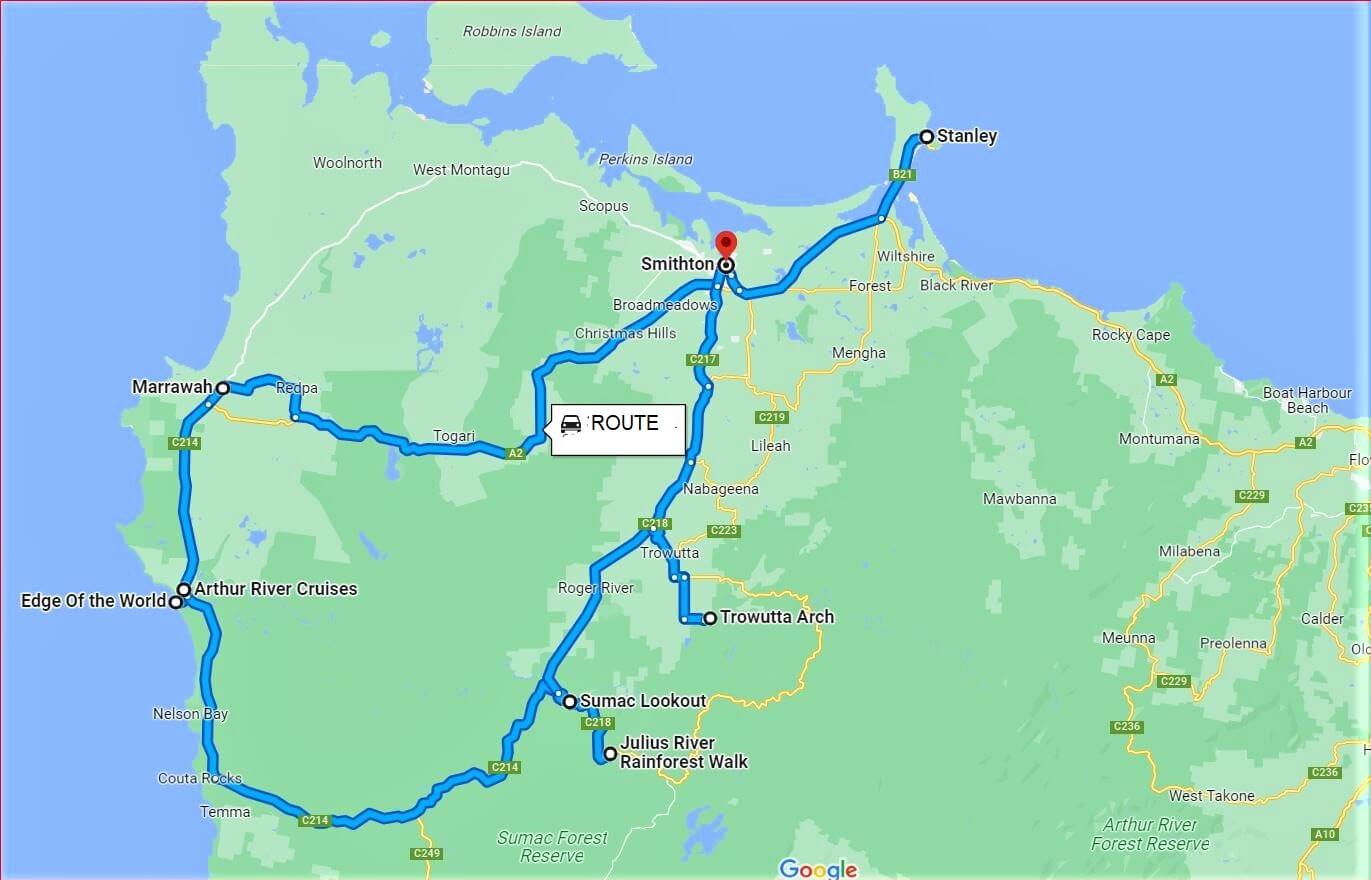
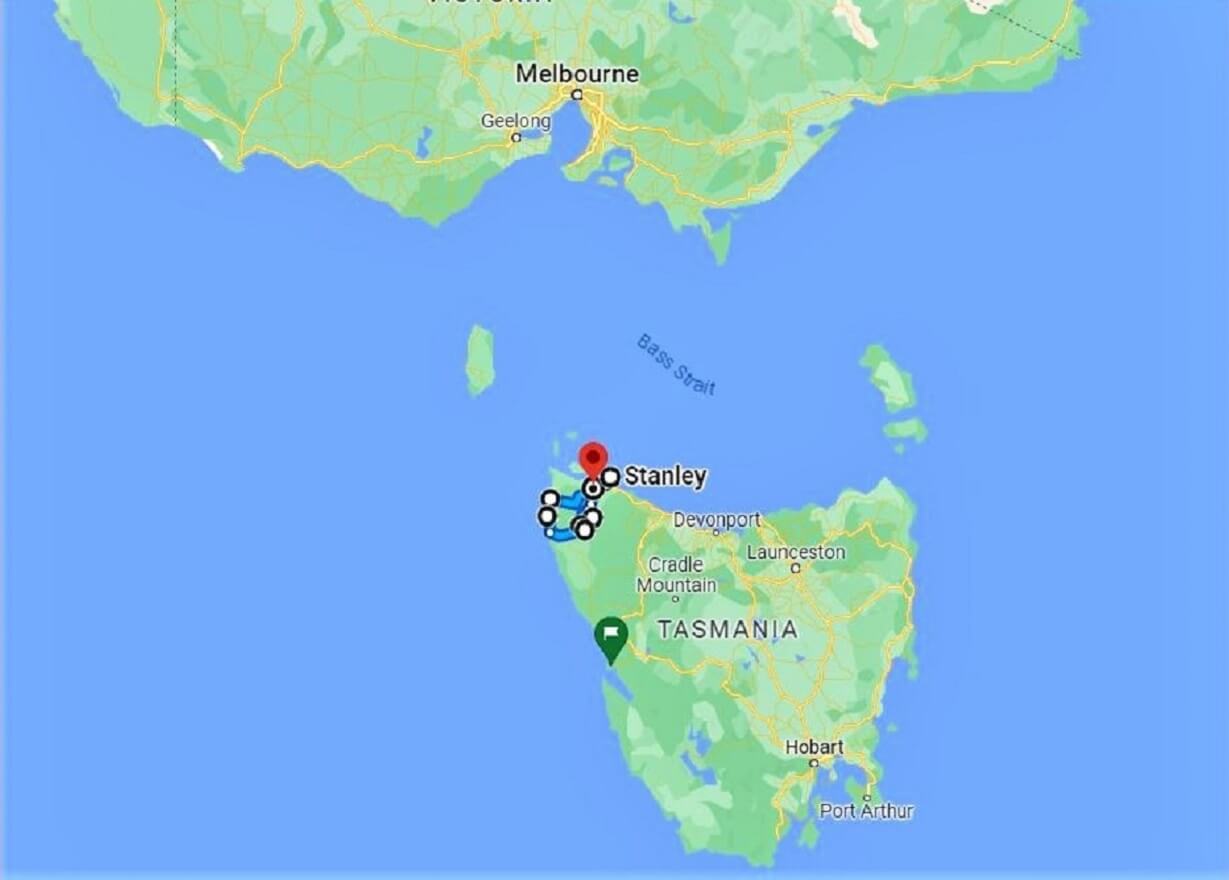
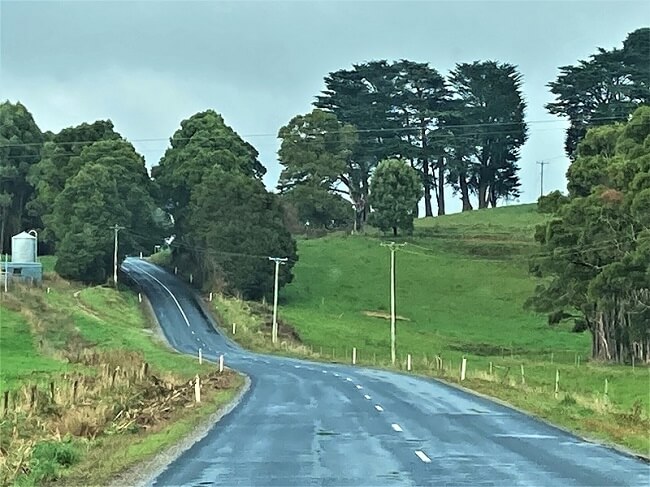
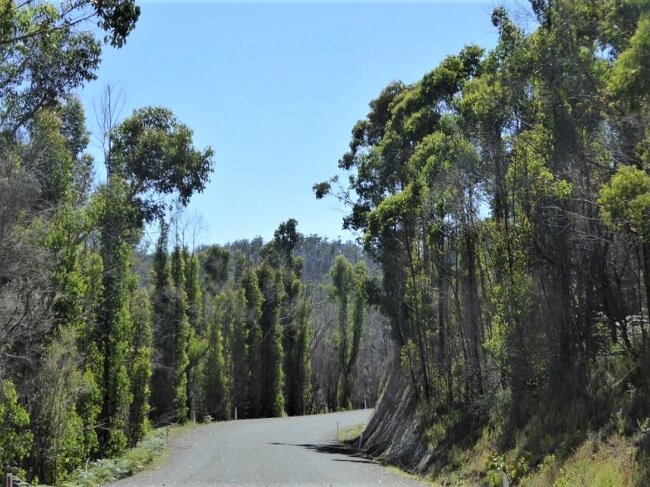
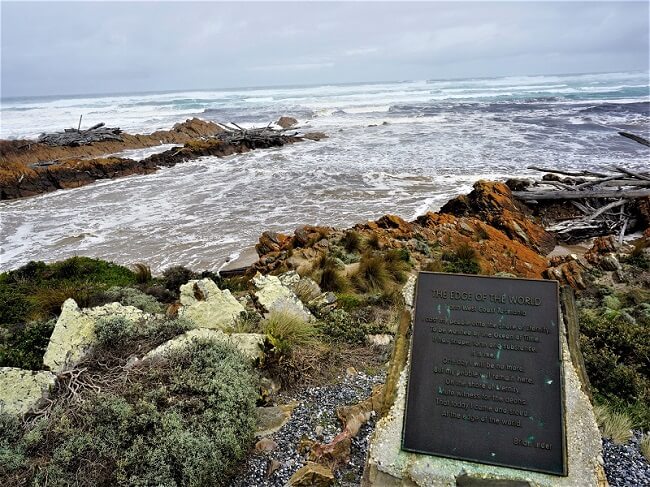
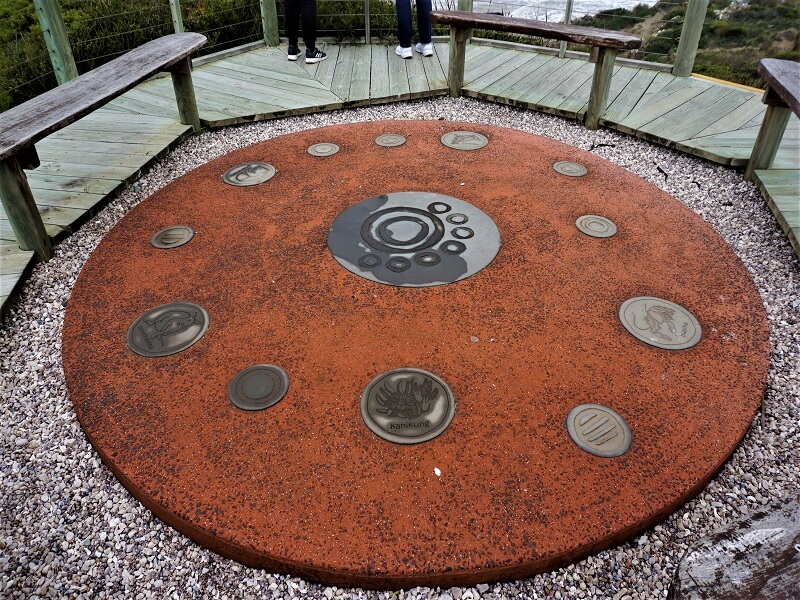
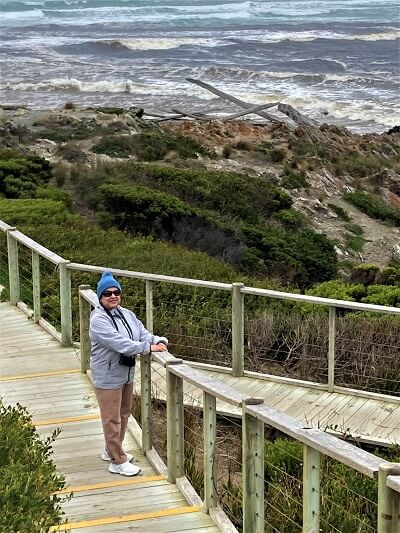
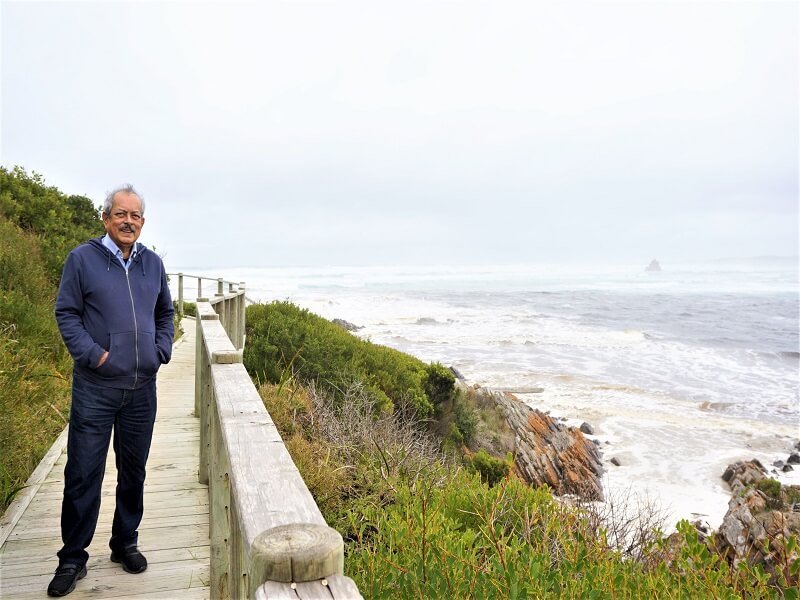
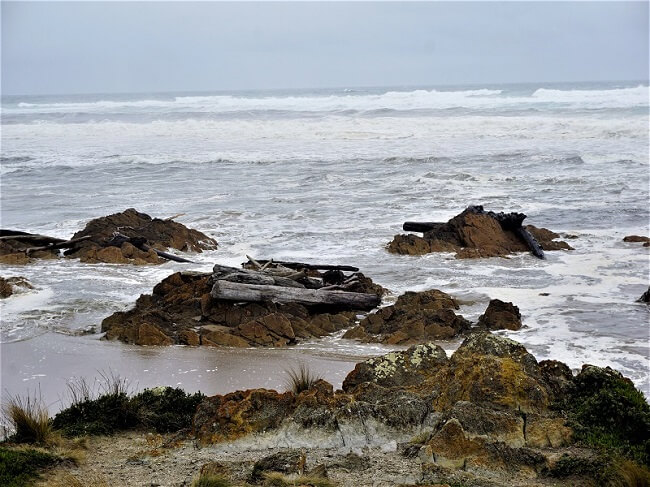
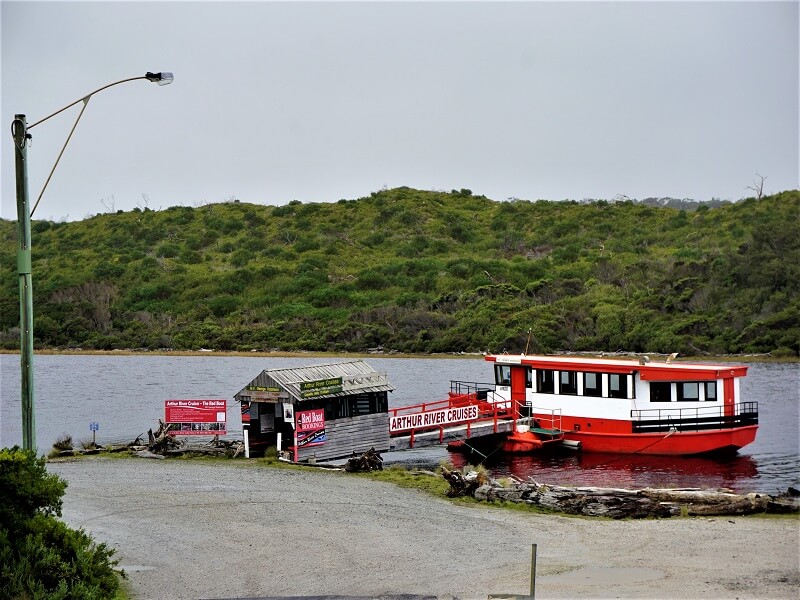
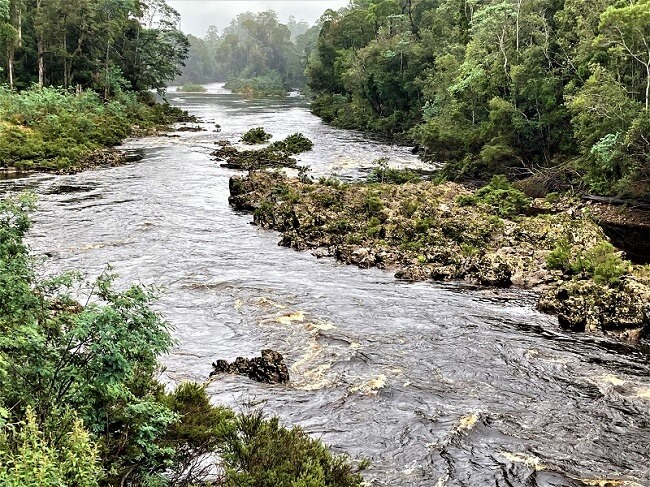
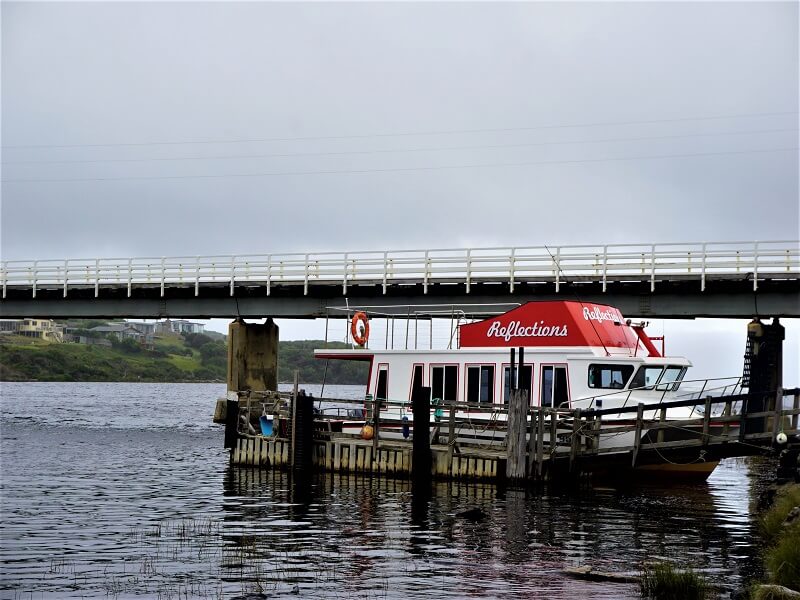
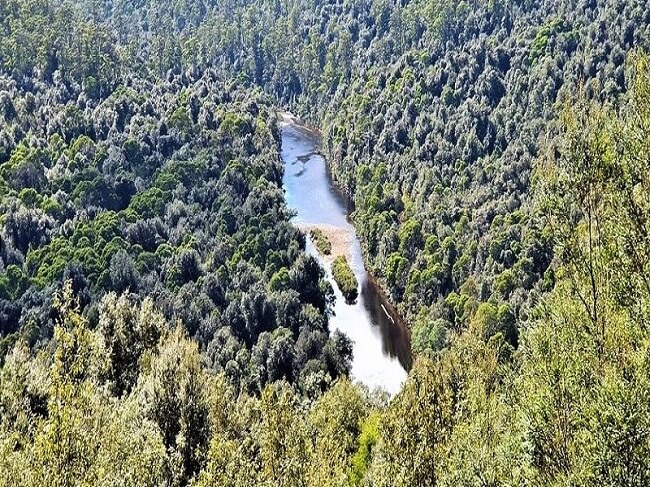
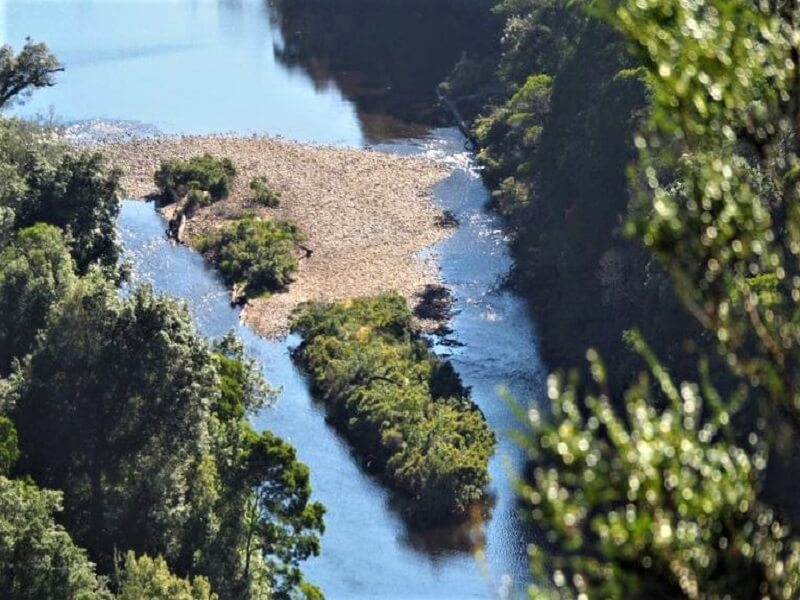
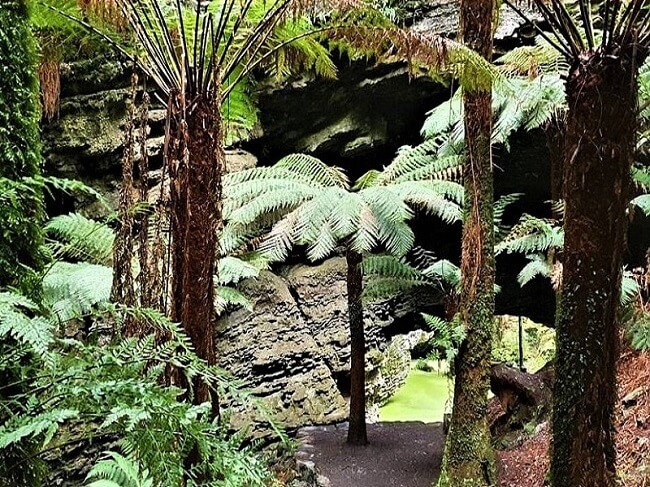
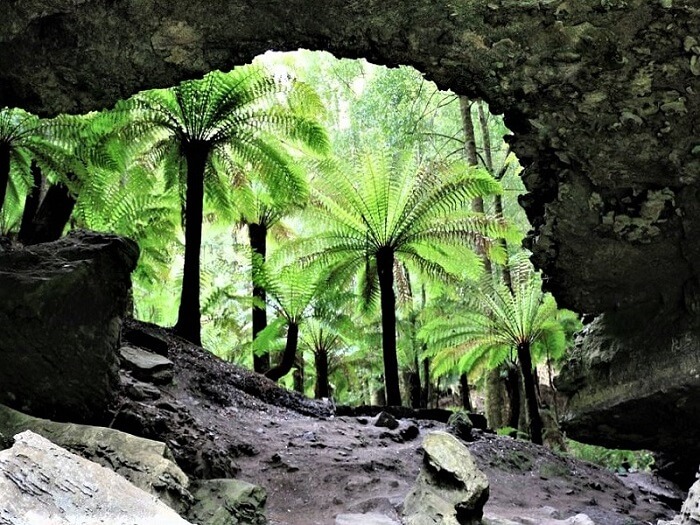
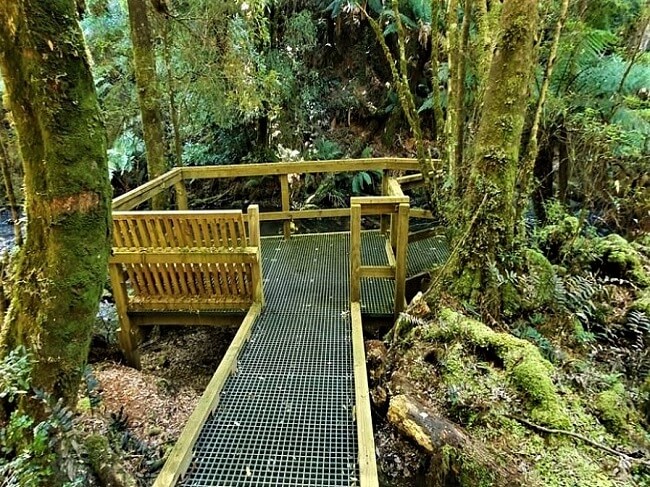

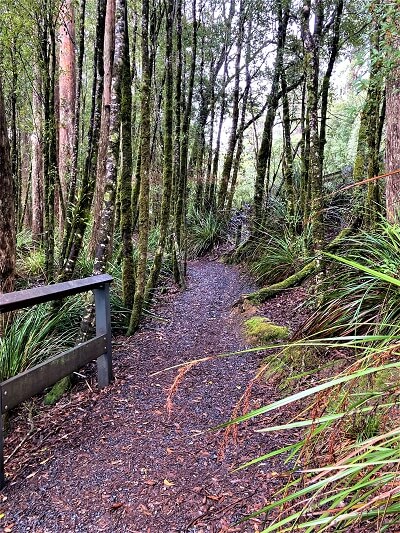
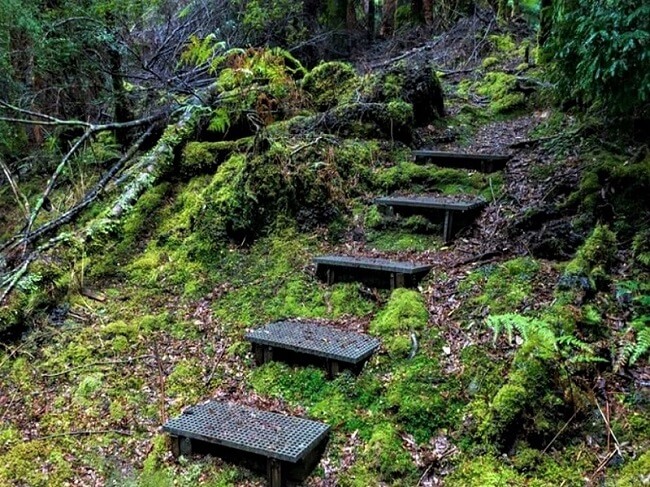

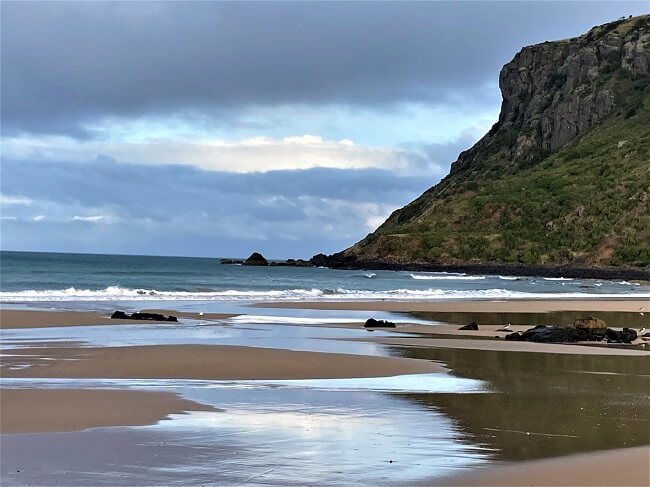
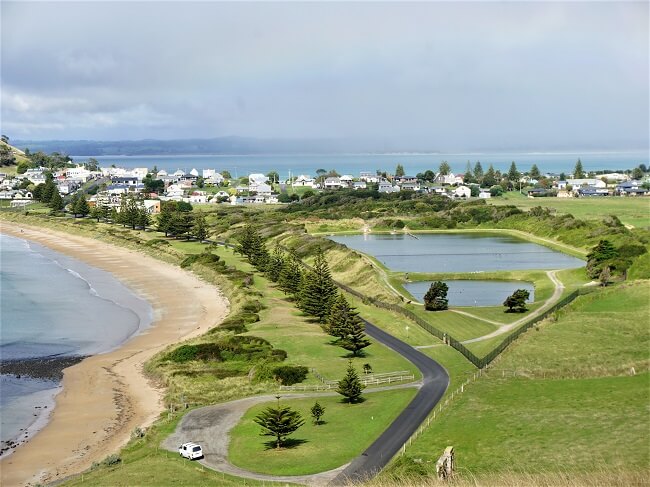
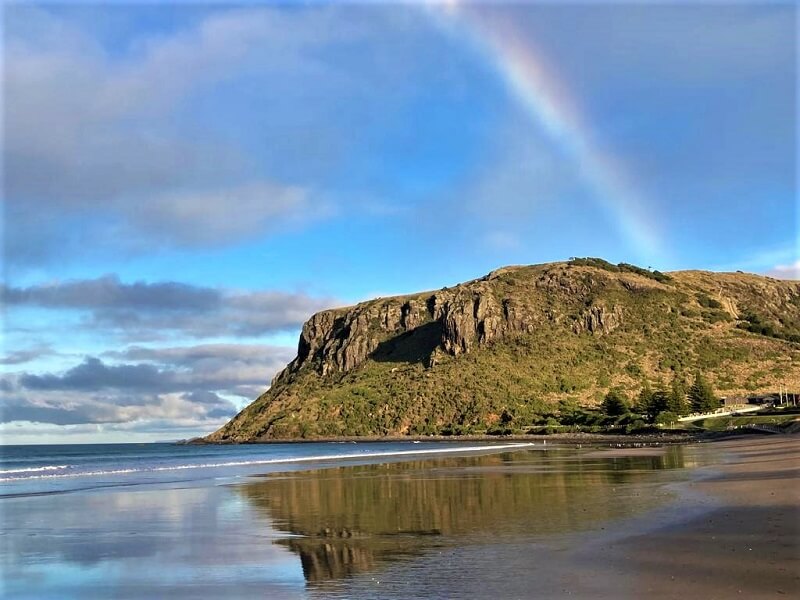
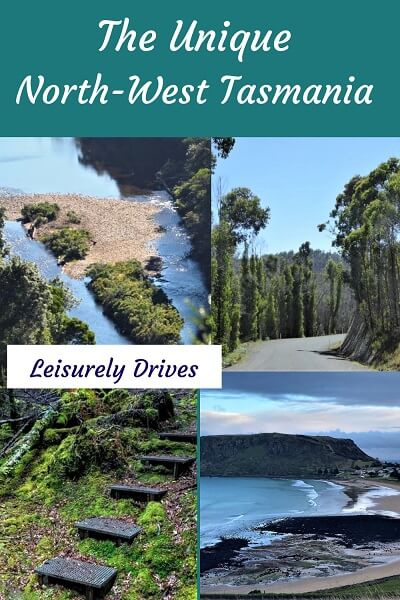
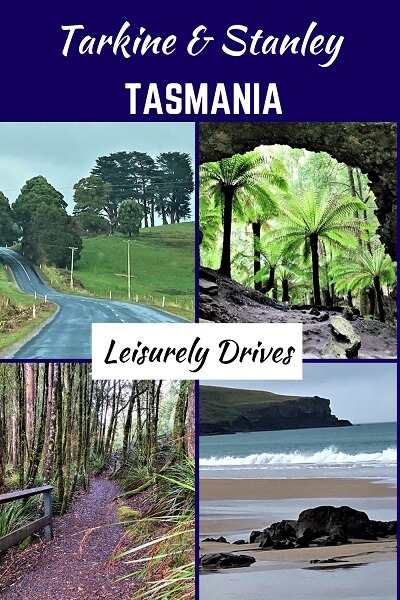
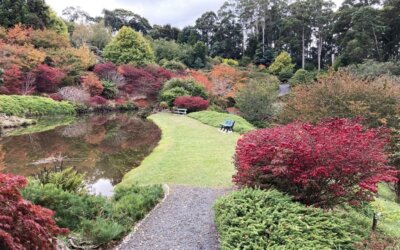

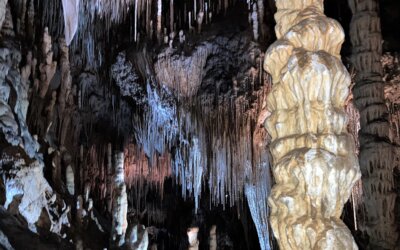
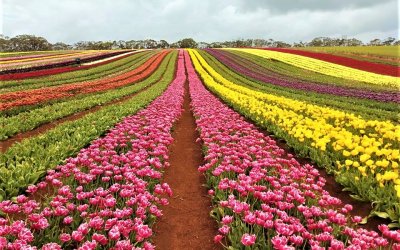
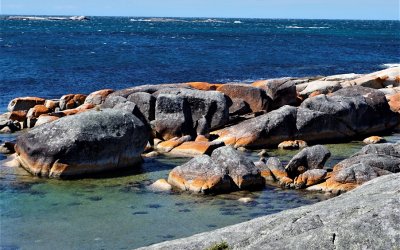
What a great road trip route. Tasmania is high on our bucket list, so will save this for our future trip. I love that photo from Geoffrey beach with the rainbow in the background. What a fantastic moment you captured there.
A rainforest walk sounds so relaxing! Tasmania has always been a place I’d love to visit, but I need to get to Australia first and there’s already so many new places to see there! Thanks for sharing (:
We will definitely want to plan enough time to spend some time in the Northwest when we finally get to Tasmania. The Tarking Drive has so many great stops along the way. Good tip about taking a 4WD vehicle for the moody roads. And a paper map too!
This looks SO interesting! And I love that there’s a place called the Edge of the World. It looks so beautiful! It’s a shame the river cruises were closed, as I’d love to do that. Maybe I’ll have to go in a different season, but Tasmania is a place I’d love to go!
This trip looks like such an adventure, I’ve always wanted to go to Tasmania- will save this for a future trip!
Ah road trips are one of the best ways to have a good look and stop at interesting places along the way. Tasmania always seems like a wild region full of nature and exploration opportunities. So Tarkine drive is a good tip I would follow. Also great tips are where the gas station is and how bringing along a paper map makes a lot of sense for regions with poor mobile reception.
This is just one of the spectacular road trips in Tasmania. So much to see and do and get back to nature. Can’t wait to follow your route.
The view from sumac look out looks very nice!
Looks like such a wonderful road trip! I love that photos of Geoffrey beach
Thanks for sharing this experience, Jan!!! What’s the best time of the year to do this? Looks pretty cold from your photos but would love to do this when I can enjoy the beach! I am assuming this is right now? If yes, how cold was it?
Hi Trisha, it was not too cold. About 18 deg C (64 F) to 8 deg C (46 deg F). That was in end April. Summer would be end of the year for this part of the world. Hope this helps.
The Tarkine looks like my kind of road trip. I love remote places, where the chances of meeting other tourists are very low. It’s good to know that you have to prepare when it comes to fuel, as there is only one petrol station on this route. The end of the world look like a great place, I’d love to do a bit of hiking over there. I would definitely also go to the Sumac Lookout, the views from there are just incredible.
Wow! What a great view and definitely worth the drive. Thank you for managing our expectations and for all the tips. I think the key here is to really plan ahead and get everything ready since as you mentioned the services are quite low in the area.
I am equally shocked with the low population in Marrawah but I have been thinking of how it is to live in a really small town. Perhaps it would be nice and stress-free.
Your journey through North West Tasmania is absolutely captivating! Your vivid descriptions and beautiful photos took me on a virtual tour through this unique region. Thanks for sharing your adventure!
I would say the views at Trowutta Arch are more to look like the prehistoric world. It reminded me of my hike to waterfalls near Jakarta, Indonesia full of fern and palm tree-like trees. And I think visiting the Edge of the World is pretty cool! It’s like walking to the end of the world and you did it!
Wow! I had no idea that Tasmania’s northwest was home to one of the world’s largest temperate rainforests. Looks like such a fun road trip! I would enjoy some of the trails and viewpoints (especially the Edge of the World – woah!) along the way. Xx Sara
Wow- we have never been to Tasmania, but it sure looks beautiful. Stanley looks amazing and we hope to visit someday. A leisure drive is our favorite thing to do exploring new-to-us regions.
This looks amazing. I am so happy to find your blog as I plan to be there next year! So many good tips.
What a stunning place to explore..even though it’s at the edge of the world it does have some signs of established roads and businesses.. would love to visit.
The Tarkine drive route looks like an incredible road trip! I would love to visit the Edge of the World or take a hike in Rainforest Walk. I hope I get the chance to visit Tasmania one day. I would LOVE this drive!
Tassie is on my travel list for a while now, considering it’s so close by. Northwest Tassie with its temperate rainforests and beautiful towns like Stanley and the numerous lookout points is so worth exploring!